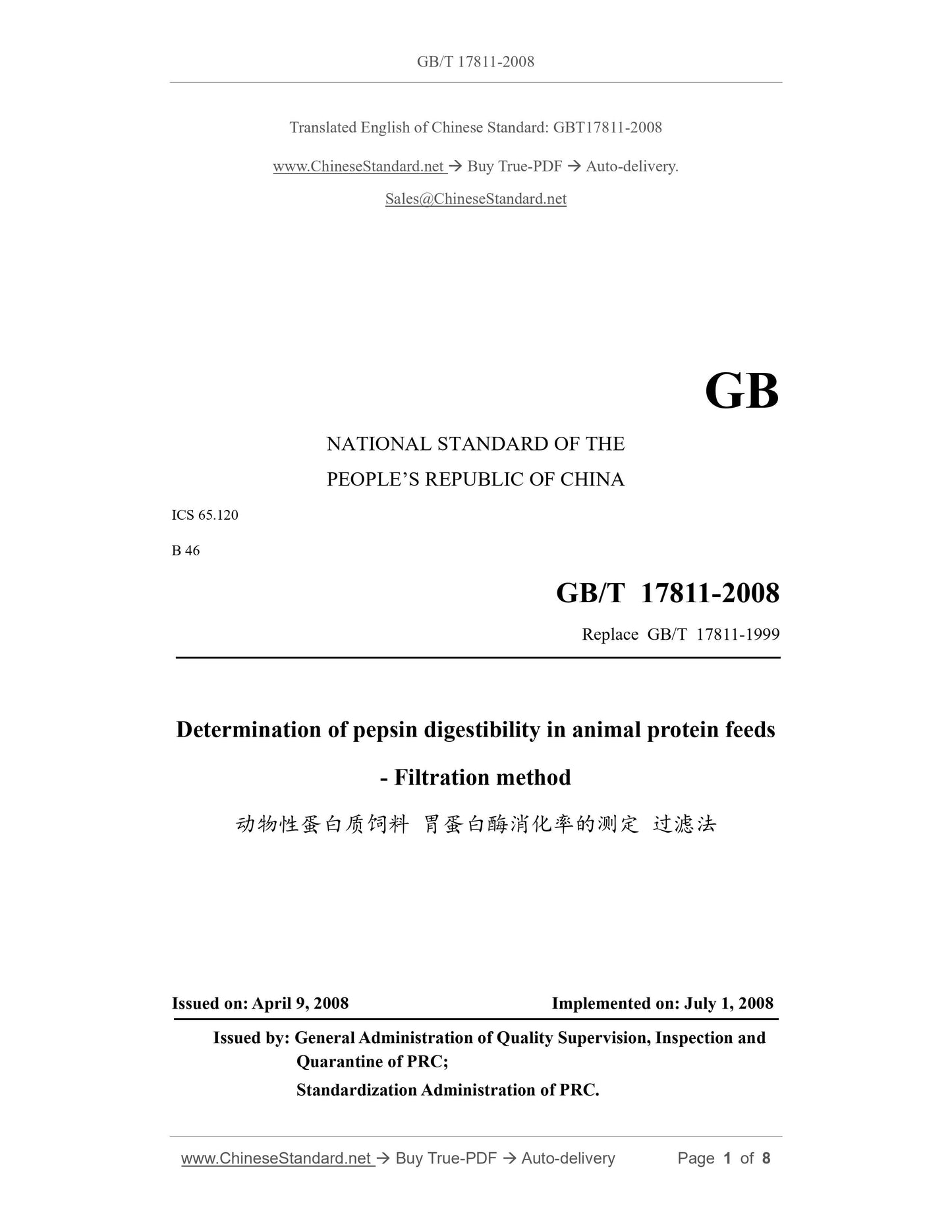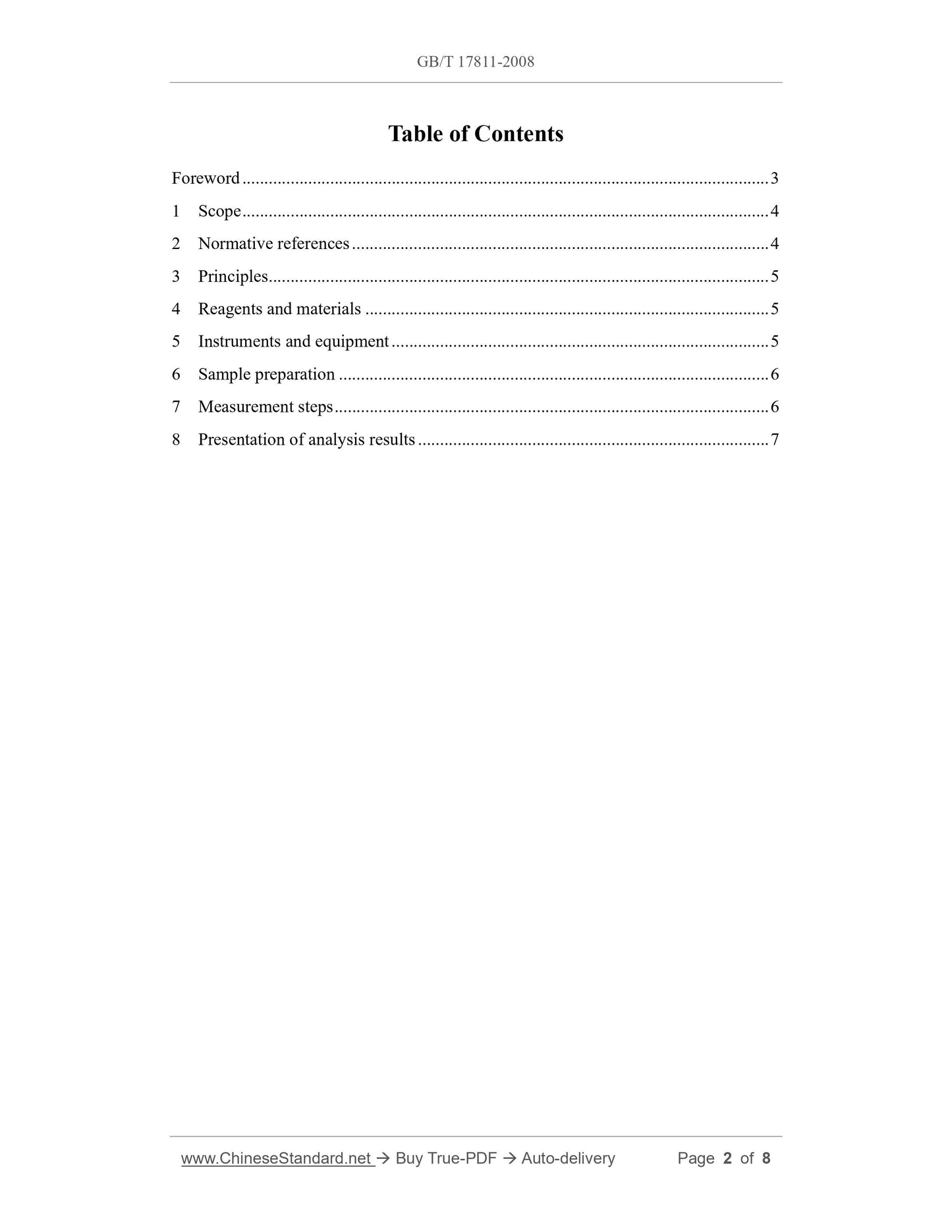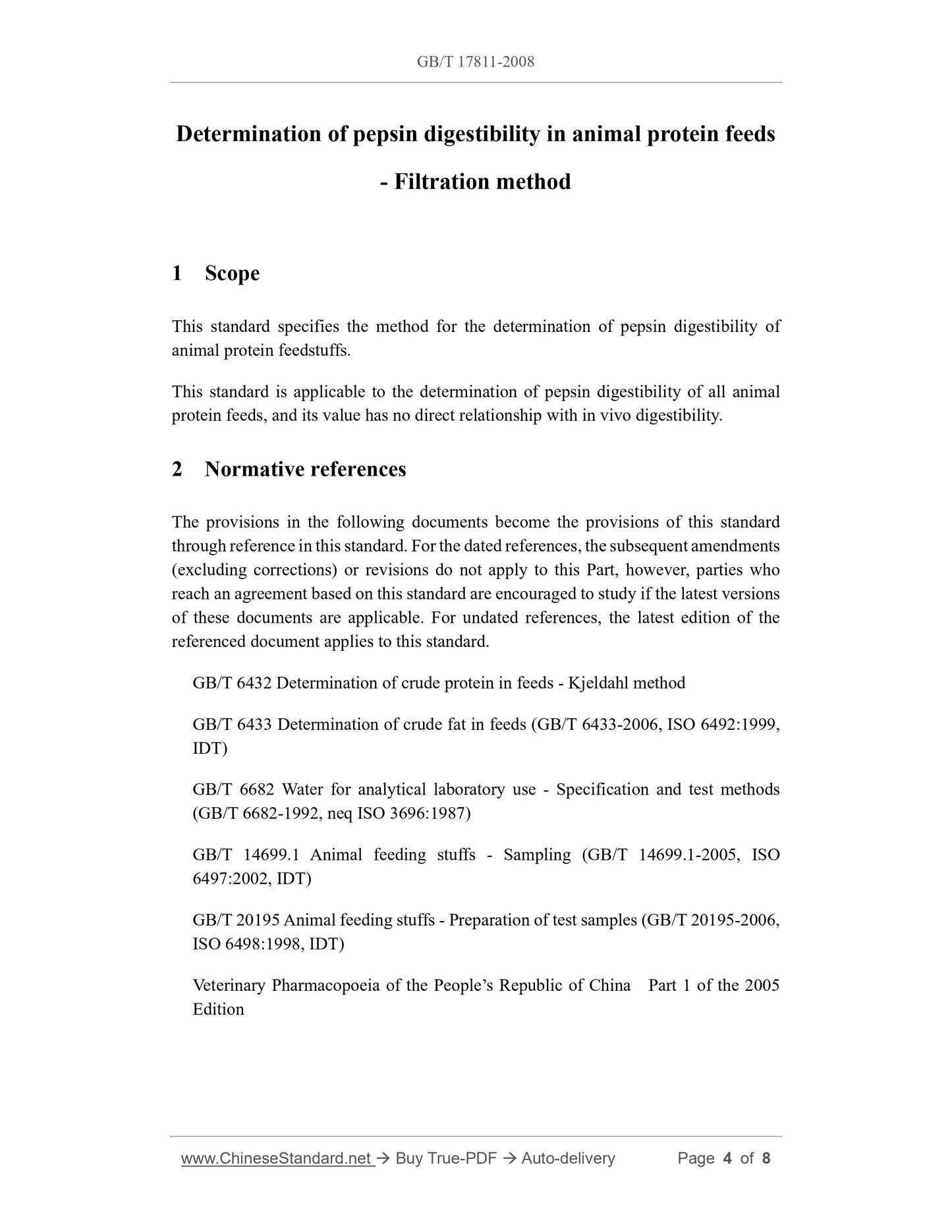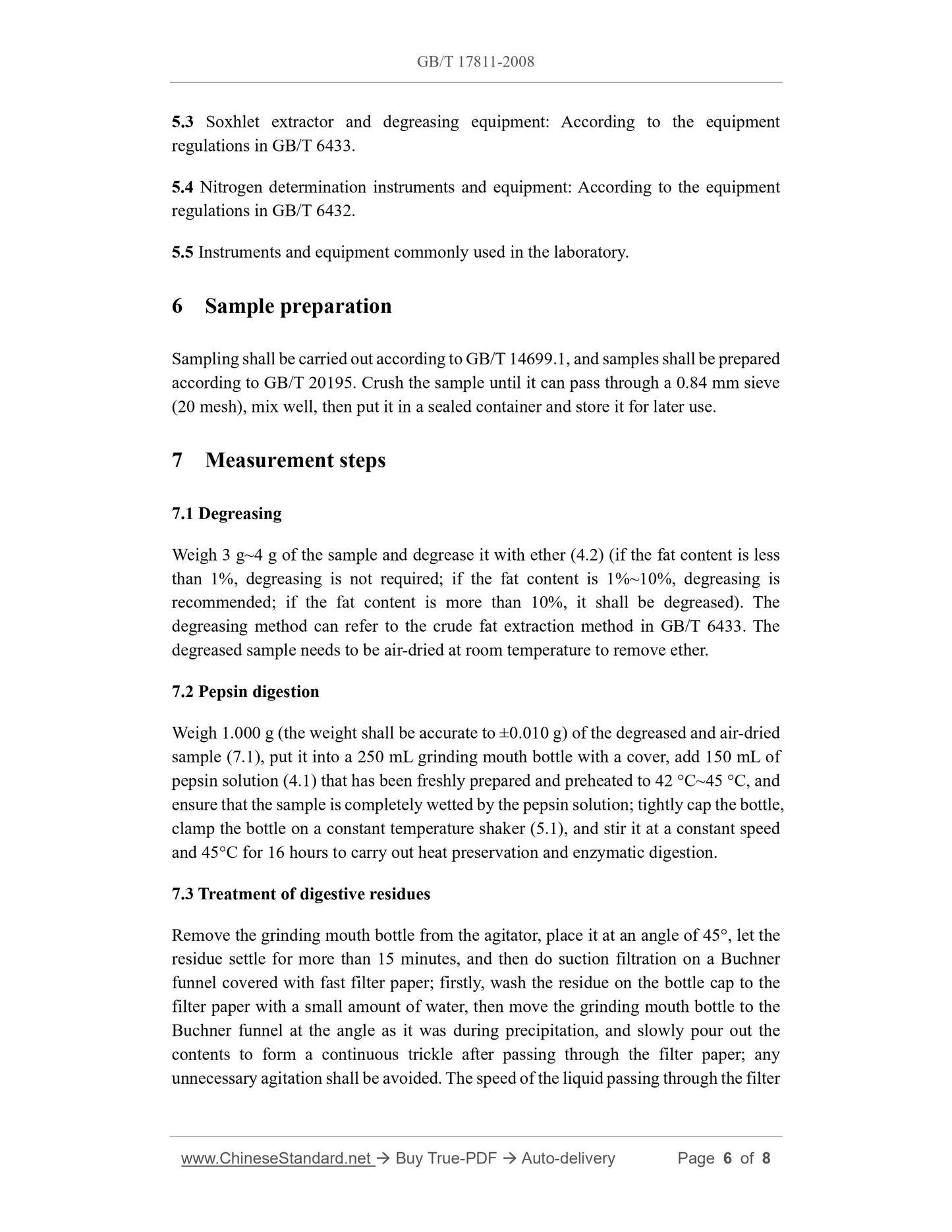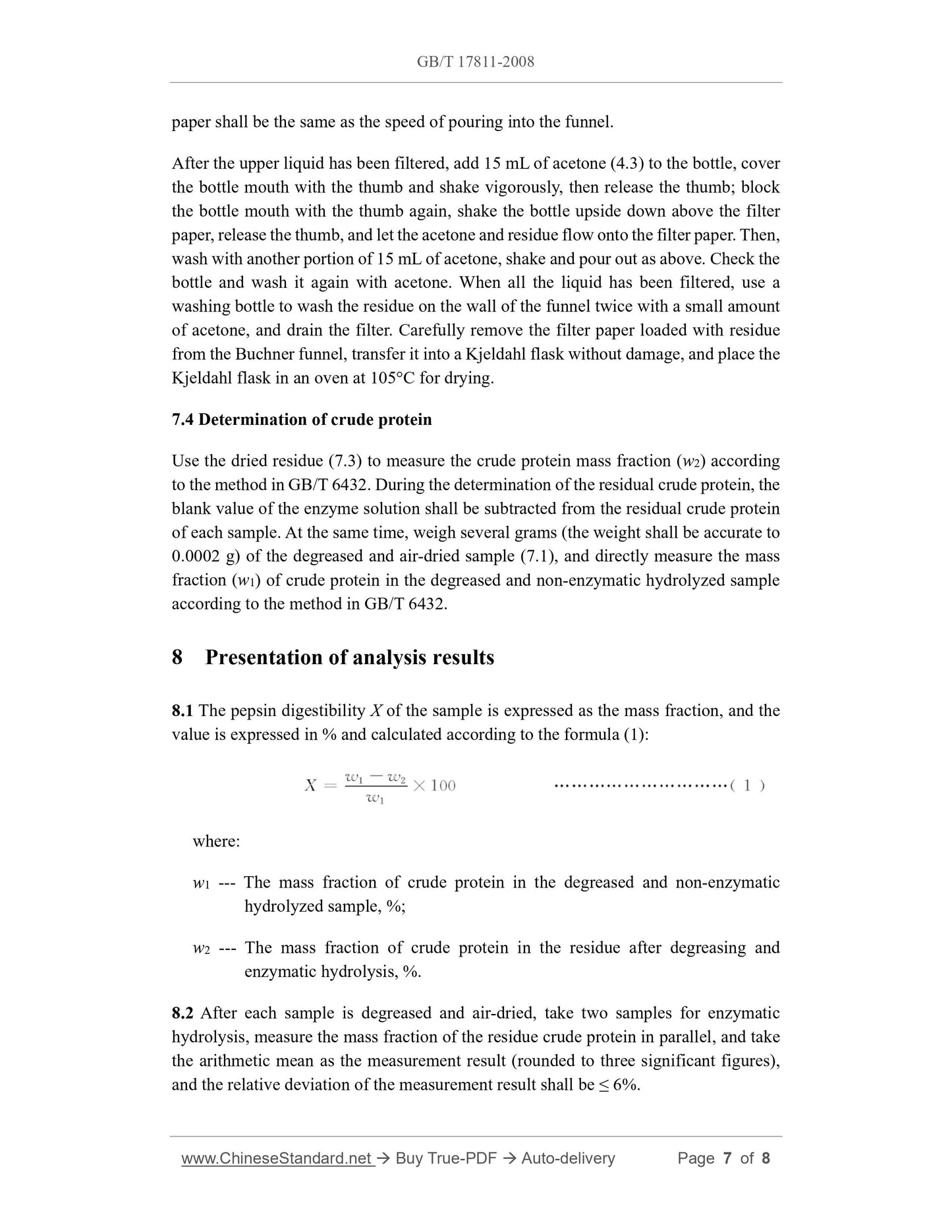1
/
of
5
www.ChineseStandard.us -- Field Test Asia Pte. Ltd.
GB/T 17811-2008 English PDF (GB/T17811-2008)
GB/T 17811-2008 English PDF (GB/T17811-2008)
Regular price
$110.00
Regular price
Sale price
$110.00
Unit price
/
per
Shipping calculated at checkout.
Couldn't load pickup availability
GB/T 17811-2008: Determination of pepsin digestibility in animal protein feeds -- Filtration method
Delivery: 9 seconds. Download (and Email) true-PDF + Invoice.Get Quotation: Click GB/T 17811-2008 (Self-service in 1-minute)
Newer / historical versions: GB/T 17811-2008
Preview True-PDF
Scope
This standard specifies the method for the determination of pepsin digestibility ofanimal protein feedstuffs.
This standard is applicable to the determination of pepsin digestibility of all animal
protein feeds, and its value has no direct relationship with in vivo digestibility.
Basic Data
| Standard ID | GB/T 17811-2008 (GB/T17811-2008) |
| Description (Translated English) | Determination of pepsin digestibility in animal protein feeds -- Filtration method |
| Sector / Industry | National Standard (Recommended) |
| Classification of Chinese Standard | B46 |
| Classification of International Standard | 65.120 |
| Word Count Estimation | 6,686 |
| Date of Issue | 2008-04-09 |
| Date of Implementation | 2008-07-01 |
| Older Standard (superseded by this standard) | GB/T 17811-1999 |
| Quoted Standard | GB/T 6432; GB/T 6433; GB/T 6682; GB/T 14699.1; GB/T 20195; " Chinese Pharmacopoeia " 2005 edition a |
| Regulation (derived from) | National Standard Approval Announcement 2008 No.6 (Total No.119) |
| Issuing agency(ies) | General Administration of Quality Supervision, Inspection and Quarantine of the People's Republic of China, Standardization Administration of the People's Republic of China |
| Summary | This standard specifies the determination of animal protein feed pepsin digestibility. This standard applies to the determination of all animal protein feed pepsin digestibility. Its value has no direct relationship with the in vivo digestibility. |
Share
